Is My Pet In Pain?
Do your pets feel pain the same way as you?
Do all painful animals yelp or show obvious signs?
A History Lesson…
All of our pets evolved from wild ancestors (although there have been MANY generations since Cave-Pugs roamed the plains of Africa…).

Animals bodies have evolved many wonderful ways of being able to cope with everything that life could throw at a creature – dehydration, infection, reproduction – the works.
But imagine a wild dog in a pack, or a lion in its pride, that suddenly seemed weaker than the rest. Wasn’t able to hunt, wasn’t able to protect its resources, wasn’t able to fight to protect itself.
These individuals could be cast from the group, or worse, killed.
So animals have VERY accomplished ways of hiding signs of pain or discomfort.
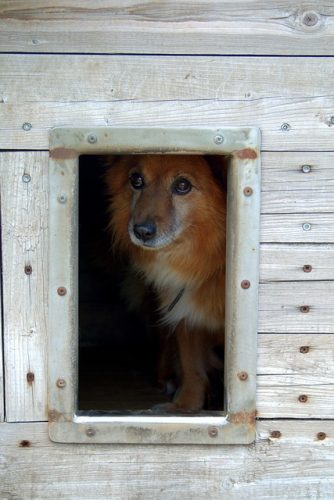
Animals have to get on with life – they have to eat regardless of sore teeth or they will starve. They have to get up from bed to go to the toilet regardless of how much their legs hurt. Also, especially with dogs, they will still want to walk and play with their ball with you, regardless of pain, because they know it’s what YOU want them to do!
They don’t know why they hurt, they just know the pain is there, and so adapt as best they can.
But pain is pain, and just because they seem to be doing their normal things, if they are doing those things painfully, that’s not good.
We should (and can) do something about it.
Signs of Pain in Dogs
Muscle and Joint Pain
If your dog has a sore leg, it is likely they will limp.
Limping is a way of trying to limit the weight bearing time of a sore leg.
It’s usually easy to see, but often can be hard in mild pain, or in little dogs who have very short strides.
The pain may be worse after exercise, worse during exercise, or worse once they have cooled down.
The classic is an old dog with arthritis that has been lying down, then gets up, limps for a bit, then “warms” out of it.
Sometimes it can be disease specific. Dogs with a Ruptured Cruciate ligament in their knee, may stand with just their toe touching the ground.
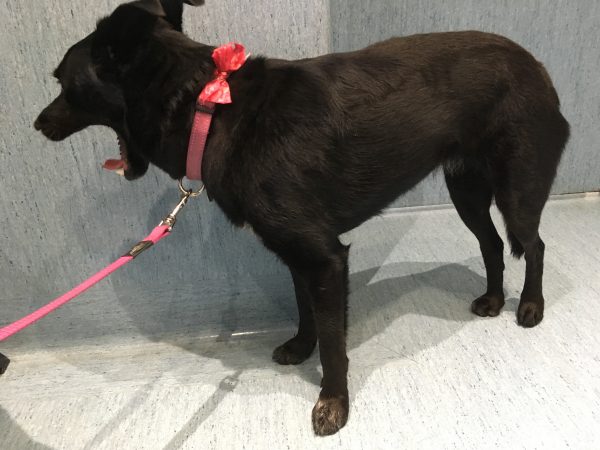
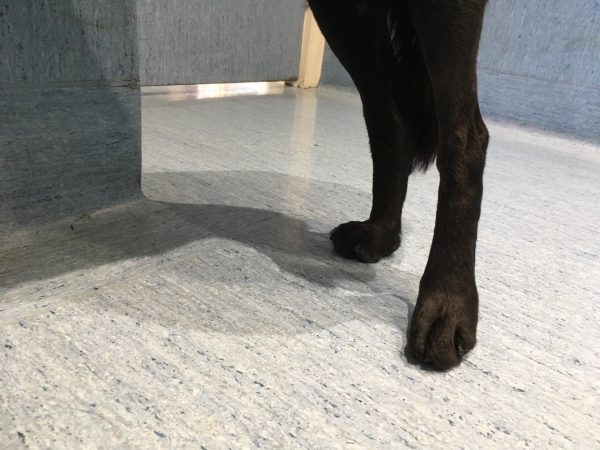
This dog has a partial tear of the left cruciate ligament. Notice how she is just touching her toe on the ground, with most weight going through the right back leg.
With arthritis, especially if dogs are getting it in multiple joints, you may notice your dog no longer wanting to interact with you any more, sleeping more (often mistaken as “Old Age” -age is a number, NOT a disease), even starting to become more anxious or aggressive.
Mouth Pain
Dog with sore mouths will still eat. If they don’t eat, they will starve.
Even with the most horrible infected teeth and gums, they will still eat.
But they often will eat slower, or you may have noticed them only wanting to eat soft food, or even not wanting to play with their ball or toys as much as they used to.
Don’t forget how sore we can get if we have a tooth ache – imagine how bad that would be if MOST of your teeth had disease!
Also keep a look out for bad breath – around the mouth, where there is inflammation there is also infection – and infection means pus, and pus means BAD SMELL!
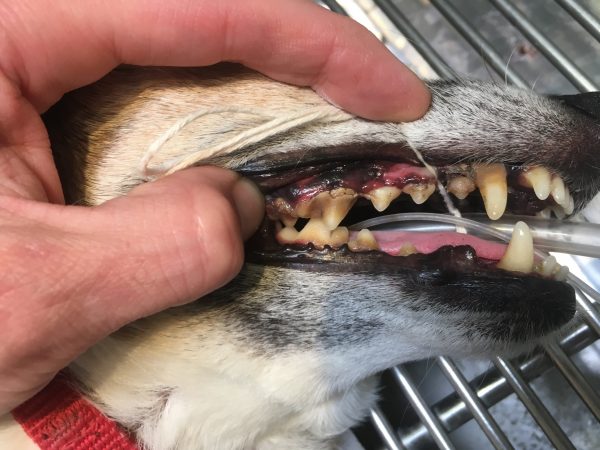
The tooth next to the thumb has Recessed Gum and marked Calculus over the tooth – this dogs breath was terrible, but was still eating fine
Dogs eat better once those painful teeth are cleaned up or removed – in reality, they weren’t using those teeth anyway, so they are better off out!
Back, Neck and Tummy Pain
Dogs with Back, Neck and Tummy pain may be quiet, not wanting to interact with you, off their food, or they may yelp or cry when you touch them where they hurt.
Sometimes with tummy pain, they adopt a “praying” position, with back legs up, and front legs stretched out in front of them.
Signs of Pain in Cats
Muscle and Joint Pain
Cats are not small dogs, and they don’t tend to show the same signs of pain as dogs.
In particular, joint pain and arthritis.
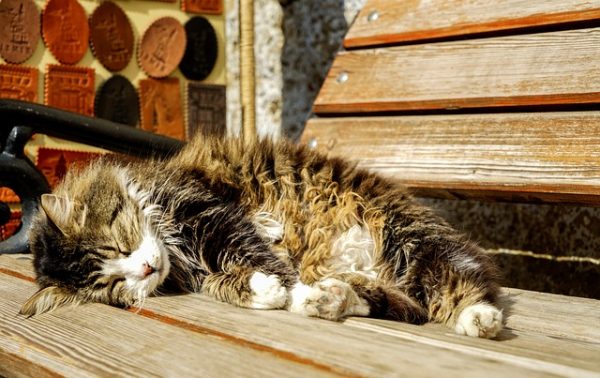
Cats work out how best to get around without causing themselves pain, and therefore, can be very hard to pick if they are in pain.
Often the signs are not to do with what they are doing, it’s more what they are NOT doing.
Cats should be able to jump up and down from pretty big heights without even thinking about it.
If you cat is hesitating about jumping up onto a chair or table, chances are they have sore knees.
If your can is hesitating about jumping down from a bench or chair, or “runs down the side” rather than jumps straight off, they are likely painful in their elbows or shoulders.
Here is Dr Robbie’s cat Melvin, showing lameness in slow motion.
Notice how he dips his head when he lands on his left front leg.
Cats will also become less interactive, less playful, and may get more aggressive or cranky when they have untreated pain.
Rarely will they meow in pain, so often these signs are missed.
Mouth Pain
As well as having dirty and infected teeth like dogs, cats also commonly get Resorptive lesions – like little cavities – that can be INCREDIBLY painful, but not look too bad from the surface.
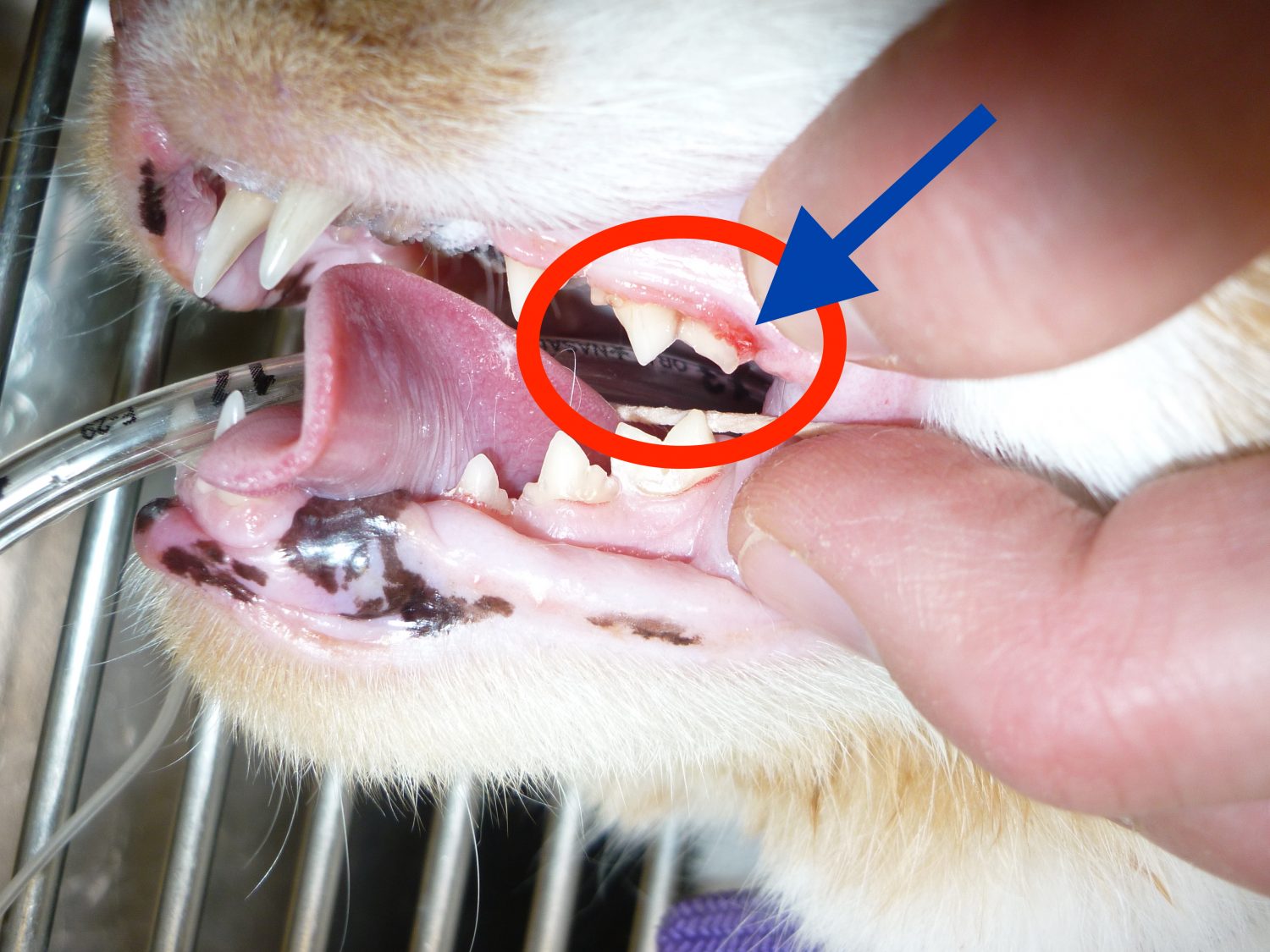
The tooth in the above picture, on the surface doesn’t look too bad.
But notice the reddened gum at the back, and the roughened area of the crown of the tooth. This means this tooth may have a resorptive lesion, and is likely causing the cat quite a bit of pain.
Tummy Pain
Cat’s are really good at hiding tummy pain – in that they look the same way as with everything else – quiet, lost or reduced appetite, hiding.
Often the big sign is the not wanting to eat, especially if vomiting is seen as well.
So do animals feel pain?
You bet they do, and sometimes we need to look outside the box to see the signs to indicate to us that our pets are uncomfortable and NEED OUR HELP.
First we look for what is causing the pain, then work out what we can do to help take that pain away.
For more on the treatment of pain, Check out our Arthritis Treatment Blog (Coming up later this week!).
If you think your pet could be in pain, call the clinic on (03)98079222 to speak to one of our nurses, or book online HERE